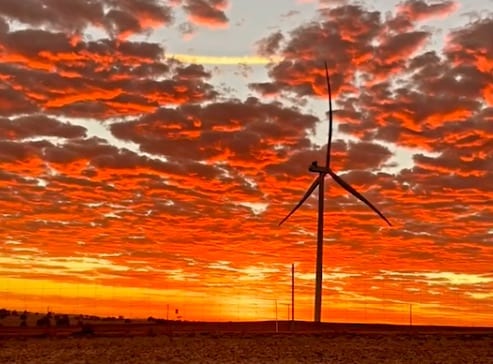The Western Australian government says the state could play host to a stunning total of 100 gigawatts of new wind and solar capacity to produce green hydrogen by 2030, and could double that number by 2040.
The staggering numbers were cited in a speech last week by the state’s hydrogen industry minister Alannah MacTiernan – and to put them in context, WA currently has less than one gigawatt of wind and solar capacity and the entire country has barely more than 10GW of operating large scale wind and solar.
“With current and planned projects under consideration we could see Western Australia produce up to 100 gigawatt (sic) of renewable energy for hydrogen in the next 10 years, which could increase to 200 gigawatt by 2040,” MacTiernan says in her speech to the local CEDA branch.
“By comparison the size of the entire stationary Australian energy market today is only at around 70 gigawatts.”
W.A. is already host to around 30 renewable hydrogen projects and proposals, including several massive wind and solar projects such as Andrew Forrest’s aspirational 40GW plan in the Pilbara, CWP’s 26GW Asia Renewable Energy Hub in the same region, and smaller, but still substantial projects put forward by Siemens, BP and others.
But these projects are either still vague about their detail, or still have much work to be done before coming to fruition, so MacTiernan’s numbers indicate a massive and rapid scale up of opportunities.
The projects that are actually being built now are tiny in comparison, such as a small hydrogen component in the Denholm microgrid, an 18MW solar farm that will produce green ammonia at Yara’s Burrup plant, a possible 10MW, 4.6 tonne a day green hydrogen facility near the Warradarge wind farm, and a proposal to use up to 25MW of spare capacity from the Ord River hydro generator when local diamond mining finishes.
The government itself says it has committed a mere $35 million to hydrogen developments, but MacTiernan says the global interest in renewable hydrogen presents a major opportunity for WA, thanks to its huge land mass (equal to the size of western Europe) and its excellent solar and wind resources and know-how from LNG.
“We plan to accelerate the commercialisation of renewable hydrogen, reduce technical uncertainties and build our domestic supply chains and production capabilities,” she said, adding there were huge opportunities in green steel, green aluminium, for advanced manufacturing of componentry such as electrolysers and wind turbines.
WA is not the only state to get excited about the opportunities in green hydrogen. South Australia’s Liberal government has set its sights on 500 per cent renewables to become an exporter of wind and solar either directly trough transmission lines or in the form of hydrogen or ammonia, but even this would amount to 12GW of new wind and solar, a fraction of what is being discussed a in W.A. Tasmania’s Liberal government also has a 200 per cent renewables target and all other states are supporting large green hydrogen projects of some sort.
But the WA renewable ambition shows a complete turnaround for a state that did not easily embrace wind and solar. It was the first state to install a large scale solar farm, at Greenough River in 2012, but the then Liberal energy minister Peter Collier marked the occasion by saying he hoped he wouldn’t have to open another one. He didn’t.
The state was also happy to buy its renewable energy certificates from other states, and its attitude created a multi-year investment drought that was only broken by the election of the Labor government, and the development of a renewable transition plan.
Ironically, the “green future” is now being embraced by all parties in W.A. The Liberals proposed phasing out coal by 2030, trumping Labor’s policy, before being nearly phased out themselves in 2021 by the latest devastating state election.
But the embrace of renewables and green hydrogen and ammonia by the state’s richest miners, particularly Forrest, and by international oil giants and others is changing the conversation.
MacTiernan says the state needs to establish an early renewable hydrogen industry to get the local market moving, and mentioned 100MW of hydrogen electrolyser capacity as a good starting point.
“Renewable Hydrogen is also an opportunity for Western Australia to start moving down the value chain and making those early moves in areas that traditionally we’ve not been involved in before,” she said.
“We have opportunties to manufacture components required to build the renewable hydrogen projects, as well as using the renewable hydrogen for downstream mineral processing.”










